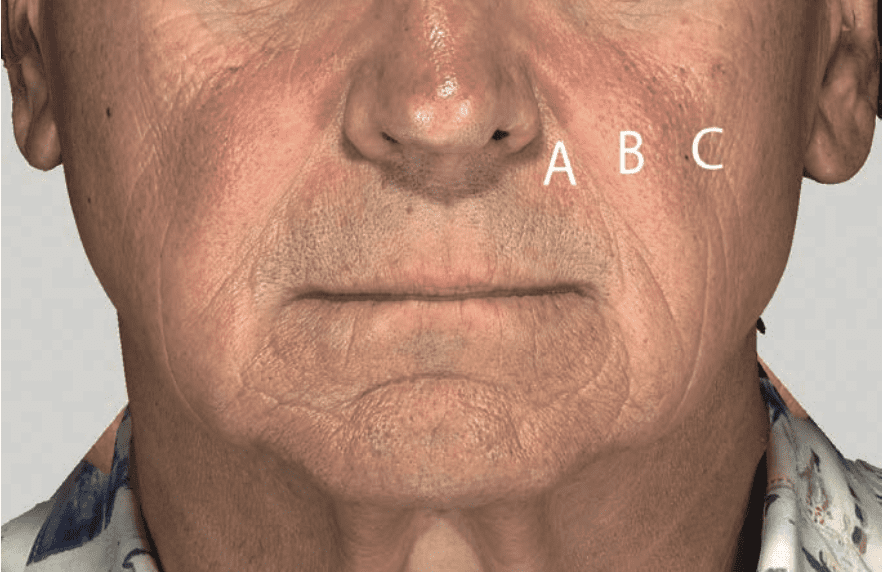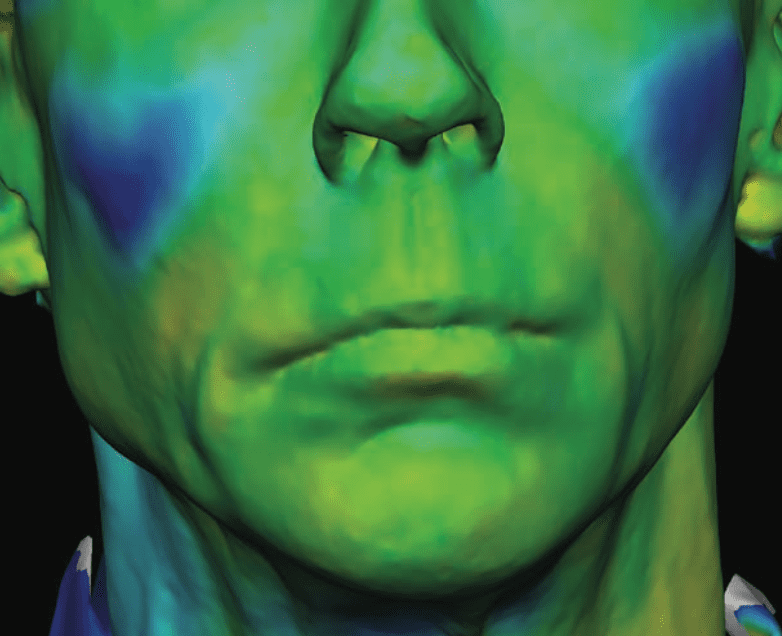For a long time now, it has been a commonly held belief that patients with nasolabial creases/folds should be treated by injecting cheeks first due to the lifting effect created. Unfortunately though, there has never been any evidence to prove this beyond reasonable doubt.

Mowlds and Lambros (2018) studied 77 subjects that had nasolabial creases and folds (see diagram taken from paper above). All these subjects underwent cheek volumisation. Three dimensional cameras studied their pre- and post-treatment records.
As expected, skin expanded around the injection site like points on the surface of a balloon separating. How far does this expansion effect travel though? Does it actually create visual improvement in nasolabial creases? The picture below explains this.

In all subjects studied, there was no skin traction between the cheek and nasolabial crease whatsoever after 3ml of cheek filler. The crease did not move unless the lips did too. There was no difference regardless of whether filler was placed in either the malar or submalar region either.
It’s likely that expanding the nasojugal crease is the key step that leads to direct perceived improvement in the nasolabial fold and not the cheeks. Injectors should think twice before recommending cheek filler as the first step to improving nasolabial creases based on the evidence found here.
One flaw in the study, however, is that there was no statement regarding the average age of the patient. Age is a key determinant of volume loss, and, as a result, nasolabial crease appearance. Personally, I believe that if this kind of study was repeated, age should be taken into account to see the effects of volume replacement based on different levels of pre-treatment volume loss.
References:
1. Mowlds D, Lambros V. (2018). Cheek Volumization and the Nasolabial Fold. J Plastic and Reconstructive Surg. 141 (5), 1124-1129.